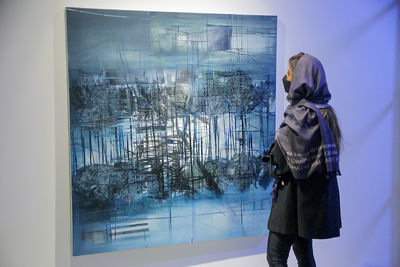In this exhibition, there are 13 paintings that have been created using a combination of materials on cardboard and canvas. What can be seen in this exhibition are paintings that show the imaginary space between the city and nature with the limited use of color. The sweet paintings of freedom are the intersection of buildings and urban space with trees and natural space, whose presence in people's lives is becoming less and less.
Another part of the exhibition is dedicated to an arrangement of broken vessels, on which there are also paintings related to the paintings, and those imaginary landscapes have been torn to pieces and destroyed.
Azadi said about the works of this collection: With the spread of the corona and staying in quarantine, I began to draw paintings that in the following months and the experience of losing loved ones, became the paintings in this collection.
Referring to the presence of the philosophy of existentialism in her works, she said: This instability became the basis of my work, and I realized that we could not always have everything that has been stabilized and seems sustainable. The line of architecture is dominant in my work because I think the city and the buildings define the identity of the people, but in our cities this identity has faded. The lines, which are like scaffolding, each lead to a motif of nature, and their intersection indicates that pristine nature has also been destroyed and integrated with architecture.
The exhibition "Institution of Living" will host the audience until December 13th.

